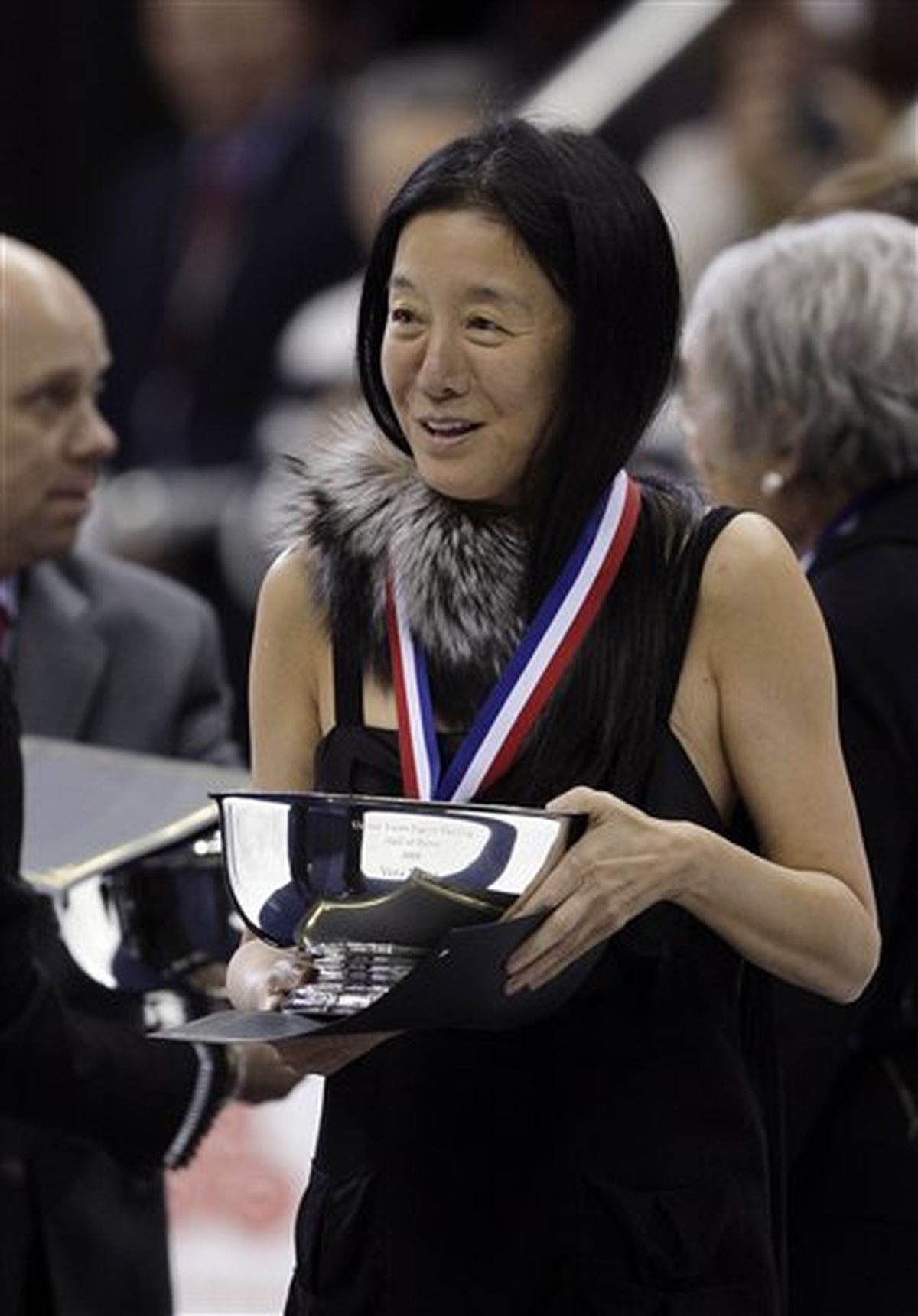Fashionably Functional
Famed designer Vera Wang had hopes of skating gold but had to settle on designing medal-winning costumes

Designer Vera Wang knows the ins and outs of competitive figure skating outfits because, at one time, she wore them.
As a child, Wang had visions of Olympic gold when she did all those early morning workouts at the rink and traveled to countless competitions, including the national championships in 1968.
But she didn’t make the U.S. team, traded her blades for high heels and hasn’t looked back, building an all-encompassing lifestyle brand that includes fashion, accessories, tabletop housewares and stationery.
Still, skating clearly has a place in her heart – “It’s a very special sport,” she says – and she keeps a hand in it by designing costumes for some top contenders, including Evan Lysacek, a favorite to medal in men’s figure skating in Vancouver, as well as previous Olympians Nancy Kerrigan and Michelle Kwan.
Wang got back on the ice for the first time in years this past fall with Lysacek and enjoyed it, although she’s a little more nervous about injuries as a 60-year-old mother and business leader than she was a teenager.
But the session wasn’t about her, it was about him – understanding Lysacek’s body moves and his particular balance of artistry and athleticism.
“You wouldn’t want someone to lose Olympic gold because their sleeve ripped off,” Wang says.
Other considerations: The outfit has to sparkle like eveningwear but function like workout gear; it has to stand up to the considerable wind generated by skaters’ speed; and it must be show-stopping from every angle, unlike a Hollywood-starlet gown that is usually photographed straight from the front or back.
“This is more pressure than an Oscar dress, in a strange way,” Wang says.
The costume also has to complement the music.
“I have to have the music for a skating costume,” she says, “and that’s not the way I normally work.”
Wang, who has a spot in the U.S. Figure Skating Hall of Fame thanks to her costumes, shares some thoughts on some outfits from Olympics past (only Kerrigan’s are her own designs):
•Kerrigan wore a neon yellow dress with a pale-pink beaded bustline at the 1994 games in Lillehammer, Norway.
It was one of Wang’s favorites because it took Kerrigan out of her usual comfort zone as a sophisticate.
“Neon is extremely active,” the designer says. “You think of it for a cyclist or football or a swimmer. It has a feel of modernity and techno.”
•Also in ’94, Kerrigan wore a white outfit with black illusion sleeves, a trick Wang also uses on the red carpet to create a sexy, suggestive silhouette without baring much skin.
The clean lines and geometric vibe also were purposeful. “I thought it made her look tougher,” Wang explains.
•Kwan made a “gutsy” move in 1998 in Nagano, Japan, by wearing a periwinkle stretch-velvet dress, says Wang, a look reminiscent of Dorothy Hamill. (While Wang often collaborated with Kwan, this was by another designer.)
“It’s a bit retro to go that simple,” Wang says. “It was a statement of confidence. Dresses had gotten so ornate.”
•Irina Slutskaya of Russia might have been trying to channel Hamill in her glittery, red dress in Turin, Italy, but Wang says only the dark, short hair captured the former gold medalist’s spirit.
Slutskaya’s jewels are more traditional for a later generation than Hamill, who favored outfits that were sleeker and understated.
•Back in 1976 at Innsbruck, Austria, Hamill let her moves, not her sparse pink outfit, make the statement, Wang says.
The lower neckline, however, did show off her hair, which Wang describes as “the wedge haircut that inspired the country.”
•The midnight-sky blue combo that Shizuka Arakawa of Japan wore in Turin in 2006 “isn’t my taste,” says Wang.
“It’s a little too showy, but it did make Arakawa look like a risk-taker, which might have been the primary intention all along.”
•Italian Carolina Kostner wore a snowflake-covered outfit in 2006 that employed the sheer-illusion look that Wang likes for the ice.
“She has a more womanly, mature style but this outfit bring her youth and whimsy,” Wang says.
•American Sasha Cohen is a chameleon when it comes to her costumes, the designer says: “You never know what Sasha is up to. … One minute she’s Carmen, the next minute she’s Gisele.”
Wang says Cohen was probably intimately involved in the creation of the ombre-blue dress covered with sequins worn in Salt Lake City in 2002, as she is for all her outfits.
Even better than the blue one, Wang says, was the red number with a sunburst-yellow hemline: “That dress was very beautiful.”
•There was a bit of a jumpsuit craze in Turin, and Russian Elena Sokolova’s Tina Turner-style, black-and-champagne outfit fit right in. But Wang says she’s not a huge fan, adding that particular look was very severe and without even a hint of whimsy.
Still, she says, there’s no denying the dramatic effect of a Turner lookalike – complete with spiky blond hair – catching air on a turn.
•Ukrainian skater Oksana Baiul liked “a lot of everything” on her dresses, and a frilly pink outfit from 1994 was no exception, Wang says.
The fringe, the fur trim, the beads, were all very much part of a trend of the Eastern Europeans of that time.
•The metallic trenchcoat – and umbrella prop – that Japan’s Midori Ito wore in Albertville, France, in 1992 might make more sense if you heard the accompanying music, Wang says.
“Was it ‘Singing in the Rain’? It must have been,” she says.
Yes, the outfit is unusual for the Olympic ice, she acknowledges, but skaters are also under pressure to try new things.